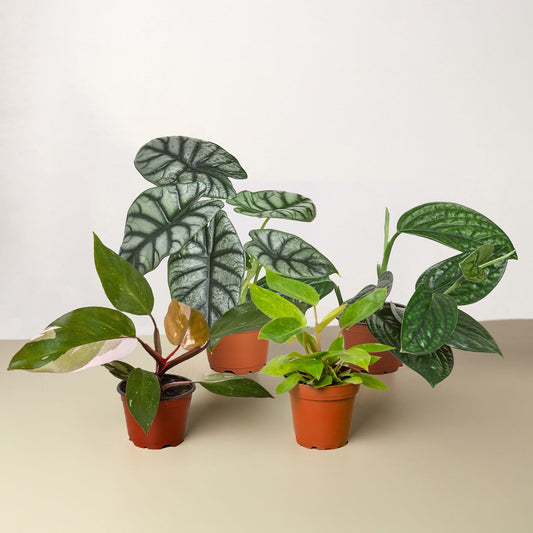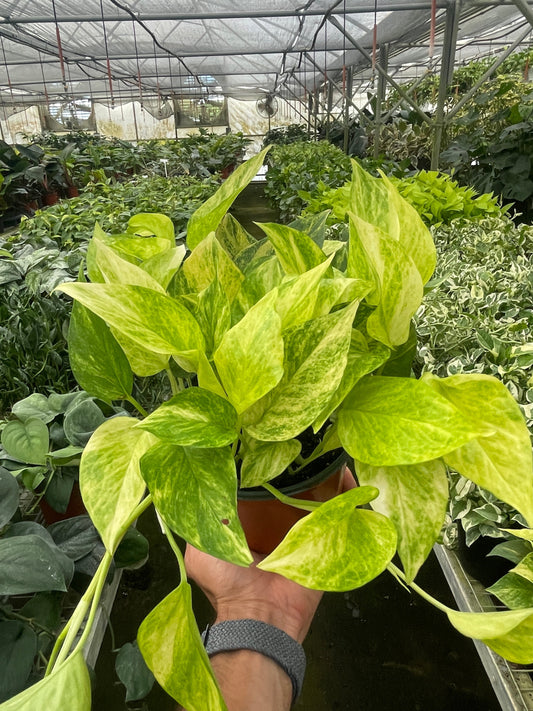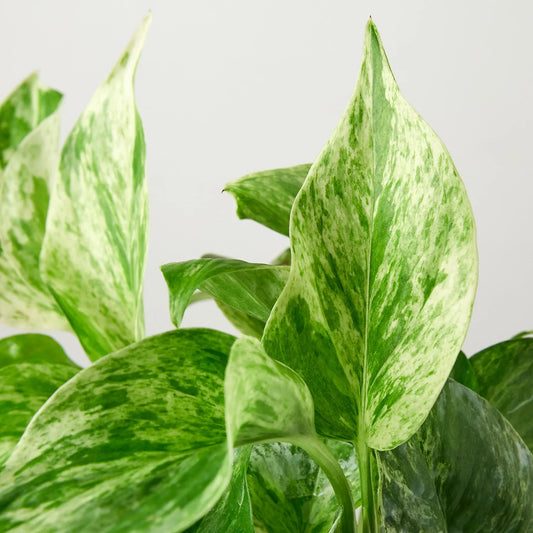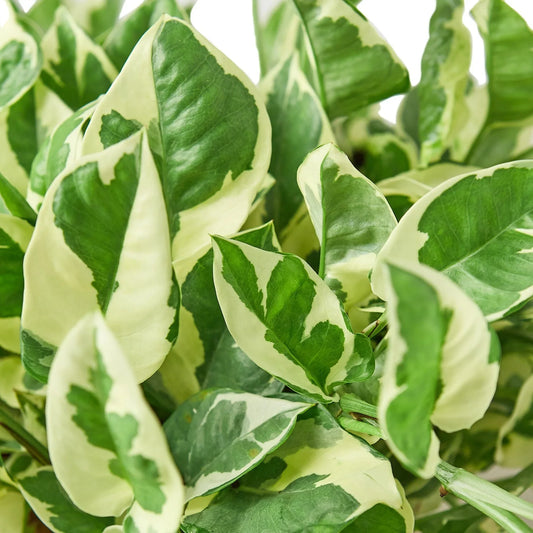How to Grow a Peace Lily From Seed
Cafe Planta Team
Growing a peace lily from seed might sound like a challenge, but it's a fun and rewarding project for plant lovers. These beautiful plants are known for their glossy leaves and charming white blooms, making them a popular choice for indoor gardens.
In this post, we'll walk you through the process of growing a peace lily from seed, from the initial setup to maintaining a mature plant. We'll cover everything from seed selection and germination to soil choice and pest management. Let's get started!
Choosing the Right Seeds
The first step in growing a peace lily from seed is selecting high-quality seeds. Not all seeds are created equal, and choosing the right ones can make a huge difference in the success of your growing journey. When looking for peace lily seeds, you have a couple of options:
- Buy from a reputable supplier: Look for companies that specialize in houseplants or have a strong reputation for seed quality. This increases the chances that you'll get viable seeds that can grow into healthy plants.
- Harvest your own: If you already have a mature peace lily, you might be able to harvest seeds from its blooms. However, this can be tricky, as peace lilies don't always produce seeds readily. If you're up for the challenge, go ahead and try it!
Once you've got your seeds, store them in a cool, dry place until you're ready to plant. This helps maintain their viability and increases the likelihood of successful germination.
Understanding Germination Requirements
Germinating peace lily seeds takes a bit of patience and some specific conditions. These seeds need warmth, moisture, and a little bit of light to sprout. Here's how you can create the perfect environment for them:
- Temperature: Peace lily seeds need a warm environment to germinate. Aim for a temperature between 70°F and 85°F (21°C to 29°C). You can use a heat mat to maintain consistent warmth.
- Moisture: Keep the seeds consistently moist but not waterlogged. Using a spray bottle to mist the soil can help maintain the right level of moisture without drowning the seeds.
- Light: Place the seeds in a spot with indirect sunlight or under grow lights. Too much direct sunlight can dry them out, while too little light can slow down germination.
Germination can take a few weeks, so don't worry if you don't see immediate results. Just keep the conditions stable and be patient!
Preparing the Soil
Once your seeds have started to sprout, it's time to think about the soil. Peace lilies thrive in a well-draining potting mix that retains some moisture. Here's a simple soil recipe to get you started:
- Base mix: Use a high-quality potting soil as your starting point. This will provide the basic nutrients and structure your peace lily needs.
- Perlite or sand: Add perlite or coarse sand to improve drainage. This helps prevent the soil from becoming too compacted or waterlogged.
- Organic matter: Mix in some organic matter like peat moss or coconut coir to retain moisture without becoming soggy.
Combine these ingredients in a large bucket or container, then fill your seed-starting pots with the mixture. This provides a supportive environment for your young peace lilies to grow strong roots.
Planting the Seeds
With your soil prepared, it's time to plant your peace lily seeds. Here's a step-by-step guide to get you started:
- Fill pots: Fill small pots or seed trays with your prepared soil mix, leaving about an inch of space at the top.
- Plant seeds: Place one or two seeds on the surface of the soil in each pot. Gently press them into the soil with your finger, but don't bury them too deep.
- Cover lightly: Sprinkle a thin layer of soil over the seeds to cover them. Aim for a depth of about 1/8 inch.
- Water gently: Use a spray bottle to lightly mist the soil, ensuring it's evenly moist without being waterlogged.
- Cover with plastic: To maintain humidity, cover the pots with clear plastic wrap or place them in a covered seed tray. This helps create a mini greenhouse effect.
Place the pots in a warm, bright spot, and keep an eye on them as they start to sprout. Once you see tiny shoots emerge, you can remove the plastic cover and continue to care for your seedlings.
Caring for Seedlings
Once your peace lily seeds have sprouted, it's important to care for the young seedlings properly. This stage is crucial for their development, so make sure you provide the right conditions:
- Light: Young seedlings need plenty of indirect light to grow strong and healthy. If natural light is limited, you can use grow lights to supplement their needs.
- Watering: Keep the soil consistently moist but not soggy. Overwatering can lead to root rot, while underwatering can cause the seedlings to wilt.
- Humidity: Peace lilies thrive in humid environments. If your home is dry, consider using a humidity tray or a small humidifier to increase moisture levels around the plants.
As your seedlings grow, you might notice them leaning toward the light. To encourage even growth, rotate the pots every few days. This helps ensure they don't become lopsided or weak.
Transplanting Your Peace Lilies
When your peace lily seedlings have developed a few sets of leaves and are about 2-3 inches tall, it's time to transplant them into larger pots. Here's how to do it:
- Choose the right pot: Select a pot that's about 6-8 inches in diameter and has drainage holes. Peace lilies prefer slightly snug pots, so avoid oversized containers.
- Prepare the soil: Use the same soil mix you prepared for the seeds, ensuring it's well-draining and rich in organic matter.
- Remove seedlings: Gently loosen the soil around the seedlings and carefully lift them out, being mindful not to damage their delicate roots.
- Plant in new pots: Place each seedling in its new pot, filling in around the roots with soil. Press the soil down lightly to secure the plant without compacting it.
- Water thoroughly: Give the newly transplanted peace lilies a good drink of water, ensuring the soil is evenly moist but not waterlogged.
After transplanting, keep the new plants in a spot with indirect light and maintain consistent moisture levels. This helps them settle into their new home and encourages healthy growth.
Dealing with Pests and Diseases
Like all plants, peace lilies can be susceptible to pests and diseases. Keeping an eye on your plants and addressing issues early can prevent major problems. Here are some common issues to watch out for:
- Spider mites: These tiny pests can cause leaves to look speckled or yellow. To combat them, regularly mist your plants and wipe down leaves with a damp cloth.
- Mealybugs: These white, cottony pests can be removed by dabbing them with a cotton swab dipped in rubbing alcohol.
- Root rot: Overwatering can lead to root rot, which causes the roots to become mushy and black. Ensure your pots have good drainage and avoid letting the soil stay soggy.
Keep an eye out for any unusual signs or symptoms, and take action promptly if you notice anything amiss. Healthy peace lilies are more resilient and less likely to succumb to pests or diseases.
Maintaining a Mature Peace Lily
As your peace lilies mature, ongoing care is important to keep them thriving. Here are some tips for maintaining healthy, happy plants:
- Watering: Peace lilies prefer consistent moisture, so water them when the top inch of soil feels dry. Avoid letting them sit in standing water.
- Fertilizing: Feed your peace lilies with a balanced liquid fertilizer every 6-8 weeks during the growing season (spring and summer).
- Pruning: Trim away any yellow or brown leaves to keep the plant looking tidy and to encourage new growth.
Peace lilies are also known for their air-purifying qualities, so keeping them healthy can contribute to a fresher indoor environment. Plus, their beautiful blooms add a touch of elegance to any space.
Integrating Peace Lilies into Home Decor
Now that you've grown peace lilies from seed and nurtured them into mature plants, it's time to consider how they can enhance your home's aesthetic. These plants are versatile and suit a variety of styles:
- Mid-century modern: Pair peace lilies with sleek, minimalist planters for a clean and stylish look.
- Bohemian: Use macramé hangers or woven baskets to create a cozy, laid-back vibe.
- Traditional: Place peace lilies in classic ceramic or terracotta pots for a timeless feel.
Peace lilies thrive in various lighting conditions, making them perfect for brightening up darker corners or adding greenery to well-lit areas. Experiment with different arrangements and placements to find what works best for your space.
Final Thoughts
Growing a peace lily from seed is a rewarding experience that allows you to cultivate beautiful plants while honing your gardening skills. By following the steps outlined in this post, you can successfully nurture peace lilies from tiny seeds to stunning, mature plants.
At Cafe Planta, we're here to support your plant-growing journey. Whether you're looking for new plants, accessories, or just some friendly advice, feel free to reach out via email or connect with us on Instagram. We believe in the power of plants to bring joy and beauty to your home, and we're excited to help you create your own thriving indoor oasis.



















